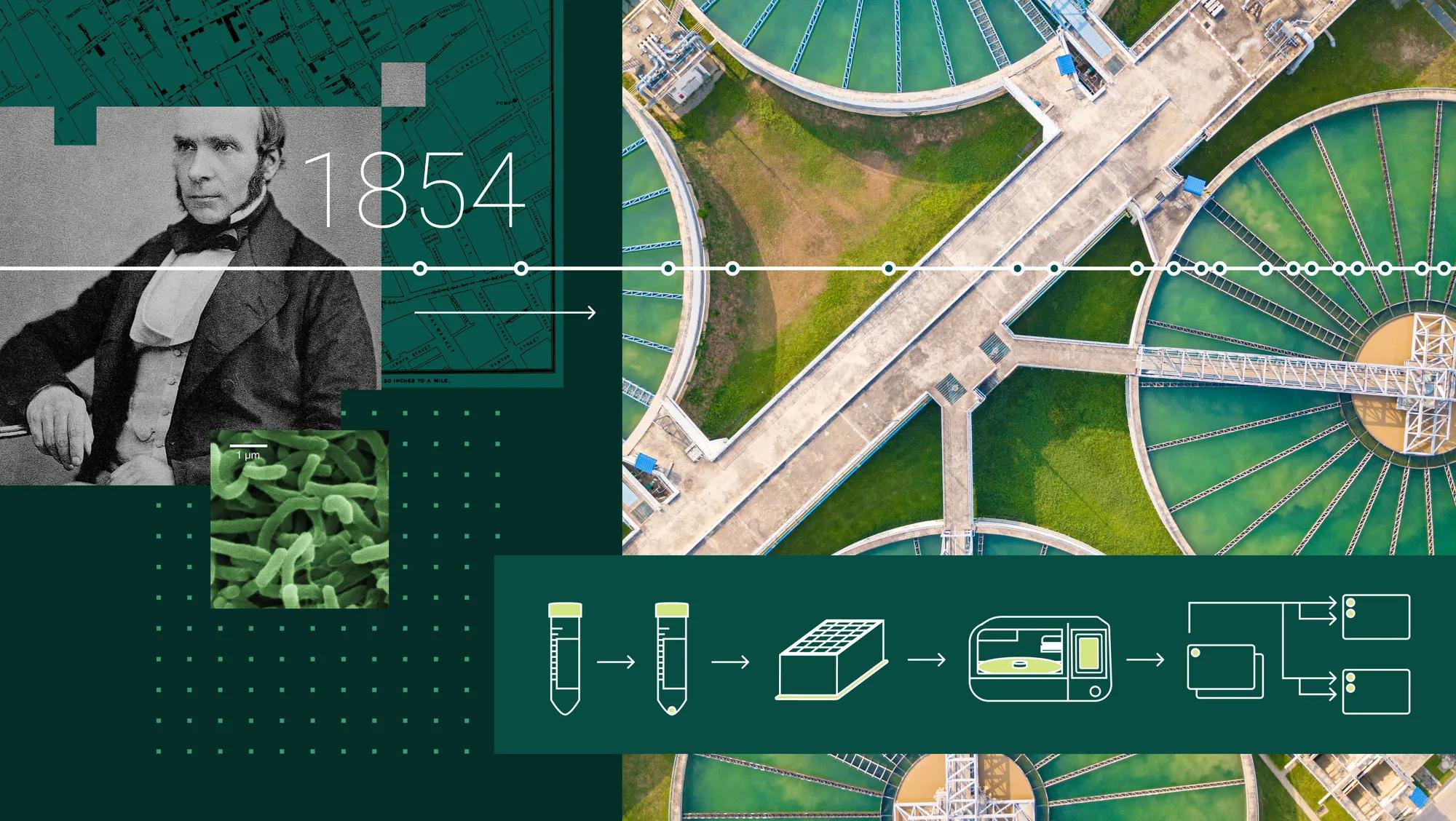Turning water into wisdom: A history of wastewater and the insight it can provide for our communities
In the 19th century, people living in the growing cities of Europe were often overwhelmed by outbreaks of violent stomach flu caused by the bacterium Vibrato cholera. For many years, people believed the cause of the illness to be “miasma” or poison in the air. This was due to the foul odor emanating from their open sewers and nearby contaminated water sources. In 1854, during a particularly bad outbreak that caused more than 600 deaths in London, a local physician named John Snow conducted an investigation. He found that many of the sick townspeople shared a common behavior — the use of a single water pump on Broad Street. He believed that the water from this pump was contaminated and persuaded authorities to remove the handle to access the water. Within days the outbreak was over and his theory was confirmed1.
The day John Snow made the Broad Street pump discovery, wastewater epidemiology was born. Thankfully, water and sanitation systems have improved tremendously since the 1850s. Today their management has become critical to the prevention of widespread disease transmission. The water they contain provides key insights into the health of the communities they serve.
What is wastewater?
Wastewater is a mix of everything that goes down our drains – from toilets and showers in our homes, to water from washing dishes in restaurants and cleaning floors in factories. This water contains viruses, bacteria, and other pathogens that can reveal the presence of infectious diseases within a population. By analyzing wastewater samples, we can get a real-time snapshot of community health, often before clinical testing identifies changing trends in disease prevalence.

With over 80% of US households connected to public sewer systems, and the ability to collect samples anywhere from manholes to wastewater treatment plants, wastewater monitoring offers extensive reach to communities of various sizes. Verily's Sightline wastewater program uses advanced technology to detect and measure pathogens in those samples, allowing us to track the spread of diseases like the flu, COVID-19, and mpox.
Before the widespread use of wastewater epidemiology, scientists relied on clinical data, which is not always representative of segments of the population such as race, gender, age, or income. Some groups may also have a reluctance to get tested, or aren't aware they are infected. Wastewater-based epidemiology allows near real-time information independent of clinical testing, in a highly cost-effective manner, providing early detection and the ability to track emerging diseases and variants in populations. Data from community-level wastewater monitoring can provide insights into current pathogen landscapes, generate real-world actionable data, and inform public health response, including treatment and prevention strategies.2
A leader in wastewater-based epidemiology
Verily Sightline Wastewater
Verily is a leader in the development and implementation of wastewater-based epidemiology. Our scientists work to identify and validate assays for a wide range of pathogens, collaborating with public health organizations and government agencies, including the U.S. Centers for Disease Control and Prevention and the California Department of Public Health, to provide comprehensive wastewater testing services. Wastewater monitoring has already been used to successfully track a variety of diseases, including:
- Tracking MPOX in California: Wastewater monitoring helped detect MPOX cases early on, allowing for timely public health interventions.
- Monitoring COVID-19 in Marin County: Wastewater data provided accurate tracking of COVID-19 trends, even when clinical case reporting was limited.
- Detecting avian flu in Texas: Wastewater surveillance identified the presence of the H5N1 avian influenza virus in infected dairy cattle, demonstrating potential for monitoring emerging zoonotic diseases.
Wastewater monitoring is transforming the way public health threats are detected and handled. With coverage in all 50 states, 75% of the public expresses support for wastewater monitoring and willingness to take protective measures based on its findings3.
Sources
- Tulchinsky TH. John Snow, Cholera, the Broad Street Pump; Waterborne Diseases Then and Now. Case Studies in Public Health. 2018;77-99. doi:10.1016/B978-0-12-804571-8.00017-2
- Adams C, Horter L, Beekmann SE, et al. Infectious Disease Physicians’ Knowledge and Practices Regarding Wastewater Surveillance, United States, 2024. Emerging Infectious Diseases. 2024;30(10):2218-2221. doi:10.3201/eid3010.240719.
- Soelaeman RH, Kleven D, Losch J, et al. Notes from the Field: Support for Wastewater Monitoring and Influence on Protective Behavioral Intentions Among Adults — United States, July 2024. MMWR Morb Mortal Wkly Rep 2024;73:825–827. doi: http://dx.doi.org/10.15585/mmwr.mm7337a2



